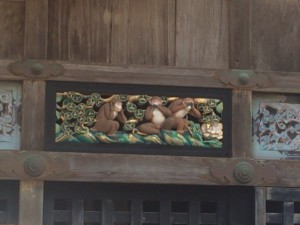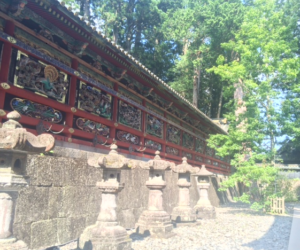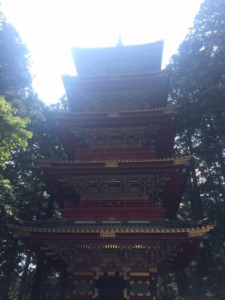Recently, my friends and I went to Tochigi Prefecture to visit the volunteer group we used to belong to. On our way back, we visited Nikko Toshogu, a famous Shinto shrine in Tochigi. I had always wanted to go to this shrine as it is a World Heritage Site and is historically and culturally valuable.
Nikko Toshogu was built in 1617 in dedication to Tokugawa Ieyasu, the first shogun (general) of the Tokugawa family. The buildings are painted with lacquer and brilliant colours, and are decorated with beautiful carvings of animals. However, the appearance of the shrine was not like this at first. The third shogun, Tokugawa Iemitsu, gathered the best architects and sculptors in the country to create a more flamboyant shrine. Tokugawa Ieyasu had been thought as the guardian for peace, as he brought a long era of peace (the Edo era) to Japan. The carved animals, such as cranes, turtles, and monkeys symbolize peace.
The fees to enter the shrine and see the famous buildings are 1300 yen for adults, and 450 yen for children 15 and under (until junior high).
Here are some of the famous features of the shrine.
The Three Wise Monkeys, “San-en,” are famous worldwide. “See no evil, hear no evil, speak no evil” is a renowned principle. The iconic carving of the three monkeys, by the famous Japanese sculptor Hidari Jingoro, is one of eight panels. The eight panels of monkeys tell us a human’s life story, including birth, anguish, and marriage.
The Sleeping Cat is another carving by Hidari Jingoro. The cat represents peace as it sleeps peacefully in the sunlight under some peonies flowers. Though the Sleeping Cat is one of the carvings that represent Nikko Toshogu, it is surprisingly small. The sign「眠り猫」as seen in the photo, has to explain that the cat is above your head.
When I visited early in August, both carvings were replicas. The whole shrine is currently undergoing restoration as well as the carvings.





Get Social